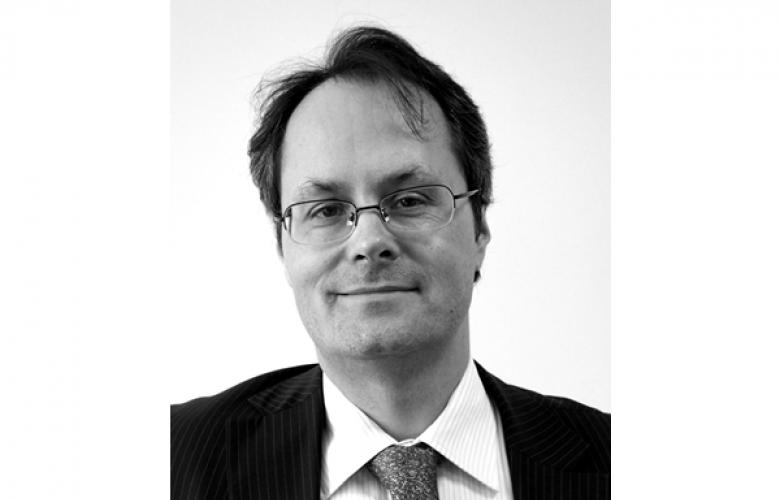Get to know Francois Duchastel - Managing Partner of Voodoo Associates
Contact
Get to know Francois Duchastel - Managing Partner of Voodoo Associates
SCHWARTZWILLIAMS spoke to Francois Duchastel about his architectural experience working in the Mongolian property market.
Francois Duchastel cofounded Voodoo, a boutique firm providing advice for commercial real estate portfolios and individual properties in emerging markets.
Francois Duchastel trained in architecture and design in his native Canada, however he has spent much of his 25-year career internationally, building extensive experience as a strategy consultant, entrepreneur and architect, particularly in the Nordic, Baltic, Russian, Chinese and Asian markets, including Mongolia.
Together with partner Teemu Vuori, Voodoo Associates creates value in developing all aspects of projects from business case, through to design and strategy. Their specialty in mixed-use commercial projects can be seen through their involvement in Asia Pacific Investment Partners’ Mongolian projects, which include the Village @ Nukht, a luxury residential and retail development just outside of Ulaanbaatar; Olympic Residence, the high end reference in Mongolia urban living, just across the new Shangri-La Hotel, Circus Residence, a middle income residential and retail development in Ulaanbaatar; and Park Place, a planned luxury development comprising condominiums, a luxury shopping mall and a luxury hotel.
What led you to the real estate industry?
I was interested in architecture and design and pursued this at University. Then working over the years, I gradually devoted more focus on what makes projects successful and distinctive and more on the commercial logic underpinning such projects and the use of branding and identity to create destinations or unique settings.
What are some of your career highlights?
It has changed over various periods. Back in the 90s I was working more in design-oriented firms and winning a few prizes was great fun. Then in the 2000s, my focus was more on large-scale projects and international projects in Asia and Russia mostly. This was quite interesting, and now we continue working internationally. The real fun projects are those that bring an innovative take on established things. This includes future retail concepts with online to offline environments or the future of work configurations as office work morphs into co-working and a geographically distributed workforce. In housing, we are looking at how new lifestyles impact traditional ways of housing or resorts/hotel design.
What are the biggest issues facing the industry at the moment?
It varies of course by region. Places like Russia are in deep economic crisis whereas in most of Asia things are still quite strong, but there is a risk of bubble and overcapacity.
More specifically then, by sector: in retail, shopping malls, shops and department stores are facing quite important challenges with a clearly changing business model brought on by growth in e-commerce on the one hand, but also the changing expectations and lifestyle aspirations of consumers. And it’s not just millennials who are changing, but rather in general terms of food options, ways of meeting and spending time in an urban context, approach to a work/life balance as well as a strong commitment to organic, sustainable living. These changes are quite challenging for established players and many of our clients, but also very interesting in creating new business and design concepts to meet these evolving trends. Though perhaps things are more dramatic in the retail sector, even offices, which were more or less boring cookie cutter things, are now evolving fast, as are hotels, resorts and housing, with much more innovative typologies emerging of what a house or apartment should look like in the future.
What advice do you have for people who are just starting out in similar careers?
Stick to what you believe is right and go for it.
What do you believe is a unique factor of doing business in your market?
To be relevant to the issues at hand is quite important for us in helping our clients, whether it is a traditional housing development or a new urban mixed-use area which needs to be planned and developed. This relevance is based on many aspects, not only design quality, which is important but also sound business concepts and understanding how to create a liveable, exciting and adaptative concept which will be successful in its location.
In Asia particularly, whether in China or Mongolia or Vietnam, the market used to take in concepts from the US and Europe but in the past 10 years, I would contend that Asia has taken a position of its own and is innovating, creating its own concepts and even taking the lead in many things such as e-commerce, O2O (online to offline) and integrated urban developments, which is quite exciting.
Even though Mongolia is much smaller than China, we have worked there for 12 years and seen it evolve quickly from a frontier quality to a more emerging regional hub and now the market is getting quite nice projects, some of which we have had a chance to be part of such as the Nukht urban entertainment village or innovative housing and mixed used developments.
What’s your outlook for your sector/s for the next year?
Housing will continue to evolve slowly, with more focus on healthy living, sustainable lifestyle being incorporated in the design and planning of housing areas.
The sectors that will see very fast pace changes are retail and workplaces, as both will see their underlying business model change further, especially malls and department stores. This will mean important changes in how to plan and design their spaces. Meanwhile workplaces will continue to transform as most of the work goes to support knowledge industries and new ways of working virtually, in a connected manner and with multiple clusters of workers within a given company or projects.
Mongolia has a relatively young population, with only around 6% over 60 years of age. In most of the Western world this group is closer to 20% of the population. What impact does this difference in demographics have on projects in Mongolia?
Mongolia is quite interesting for us although all of our projects have been in the capital region, not so much in the outlying regions, so our experience is mostly based on the growing urbanization of Ulaan Baatar. In many ways, I would contend that what is happening in Mongolia is a quick transformation as more of the younger generation adopt clearly western lifestyles and aspirations with open arms, while for olders it might seem like their world is being changed too fast. This is not uncommon in most emerging markets in the past 20-30 years and to some extend even in established markets.
How do you think local Mongolians are accepting the urban lifestyle, given their historically nomadic culture?
The challenge in my opinion is how to create a new modern Mongolian setting, whether in the city or smaller town, which has a local character without resorting to folkloric features and without copy pasting whatever has been done abroad, and create urban and semi-urban setting which are truly adapted to the needs and aspirations of Mongolians going forward. This is not only for architectural and urban projects but for many other aspects of civil society. At this stage, many of the projects are more a reflection of the what is done elsewhere and it is normal as a kind of modernization, but as the new society evolve it will most likely find its own expression, as can be seen in other countries like Korea, etc.
What are some of the unique characteristics of new developments in Mongolia that differ from architectural design in the west?
Teemu and I like to devote a good deal of effort to understanding the local context and bringing modern commercial concepts found around the world but in a sensible way which fit locally and meets the needs in an adapted and innovative way, since we not only deal with design but also the underlying business concepts of projects, it gives us a good opportunity to try new things.










